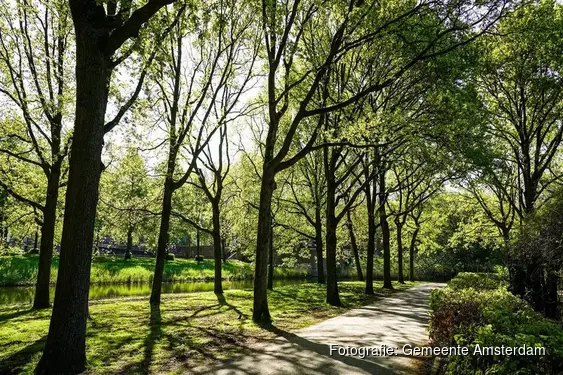For the first time, the Green Observatory provides a good picture of what types of green spaces can be found in the city and what their role is.
Various observational sources have been used, such as large-scale and small-scale terrain (BGT) core records, infrared aerial photographs, 3D point clouds and other municipal sources. By combining different sources, a more complete picture was created. An interactive control panel has also been created that allows you to zoom in on desires and bottlenecks. In this way, the monitor could help achieve the city council's ambition to make the city significantly greener. The observatory is published every two years.
Councilor Melanie van der Horst (Public Space and Green Spaces): “It is important that we now have a much better idea of how green our city is. 61% of public space sounds great, but it is still far from being enough. In many neighbourhoods, the Public space This immediately causes problems in humid and hot weather. This certainly also applies to petrified parks and non-green roofs. In the coming years, we must work with residents to green the city.
Neighborhoods where little construction is taking place are becoming greener
A green neighborhood is more pleasant to live in, provides shade and cooling on hot days and makes the street more livable. The greenery also has an important function in collecting rainwater and cooling the city on hot days.
In recent years, neighborhoods where little construction has taken place have become greener. For example, the central region has become 10% greener.
This mainly concerns additional green spaces in the neighborhood: plants and grass strips instead of tiles and asphalt, as in the redesign of Nieuwezijds Voorburgwal.
In the west and east there is an increase of about 4 percent.
Bella Vista Park in the east and the new Bellamplaine Square in the west are examples of greening. This type of neighborhood green space is important for a city where more and more people live without their own outdoor space.
New neighborhoods reduce the total green space
Overall, green spaces in the city decreased by 1.9%. This is mainly due to the construction of new residential areas in Wesp and Noord, for which agricultural land has been developed. Councilor van der Horst: “It will be difficult in the coming years to further develop the green area. There is a great need for more housing and the city will become denser. together with
Residents and business people, we work hard to ensure that private spaces are greened as well. It is important to the City Council that we continue to design new residential areas to be as green as possible.
Leave

“Coffee buff. Twitter fanatic. Tv practitioner. Social media advocate. Pop culture ninja.”








More Stories
The new Cervélo Áspero also has room for wider tires
Scientists produce huge amounts of carbon dioxide emissions through their trips to international conferences
A unique image of atoms behaving like quantum waves